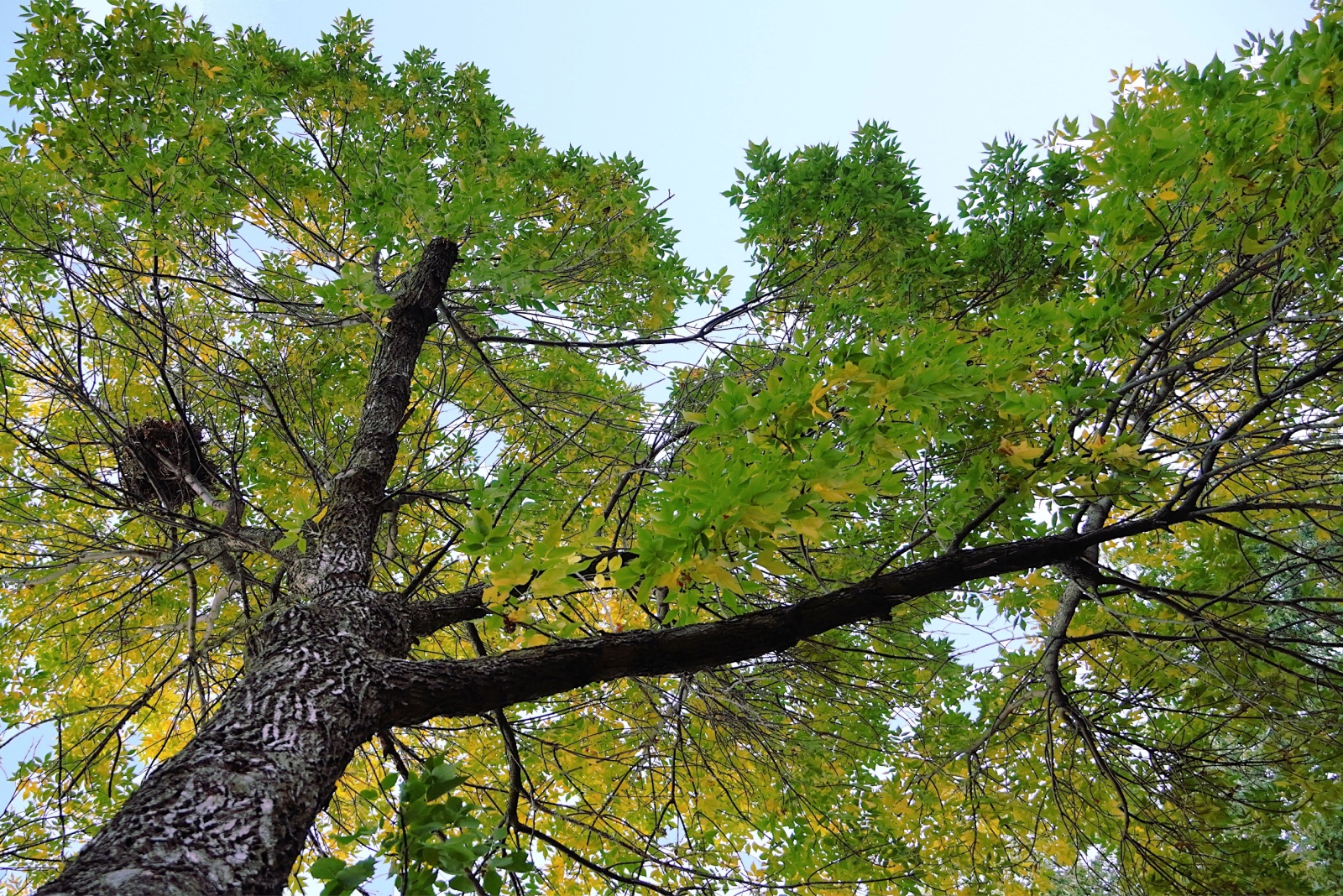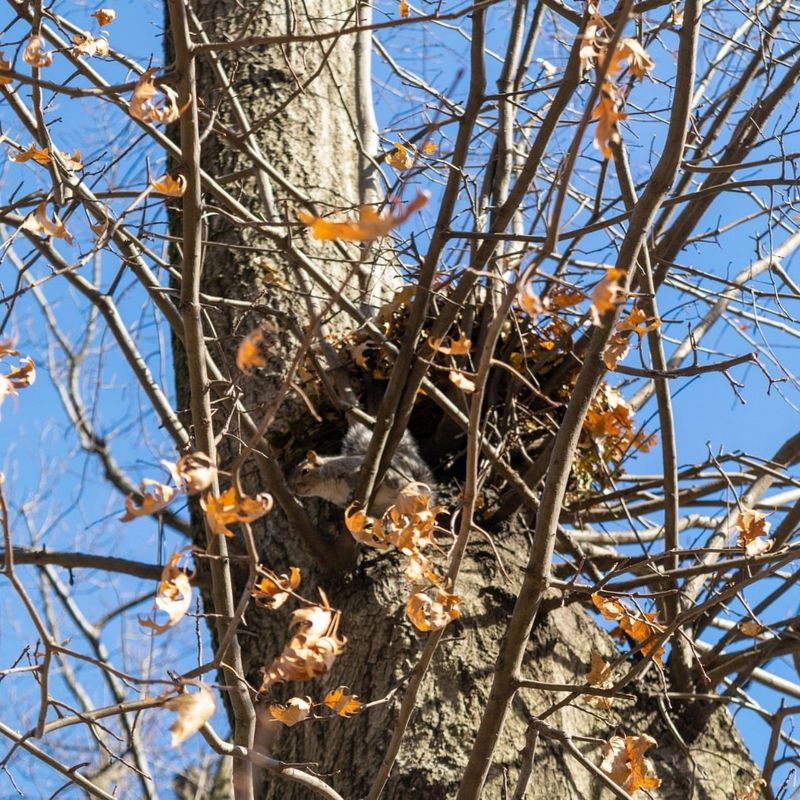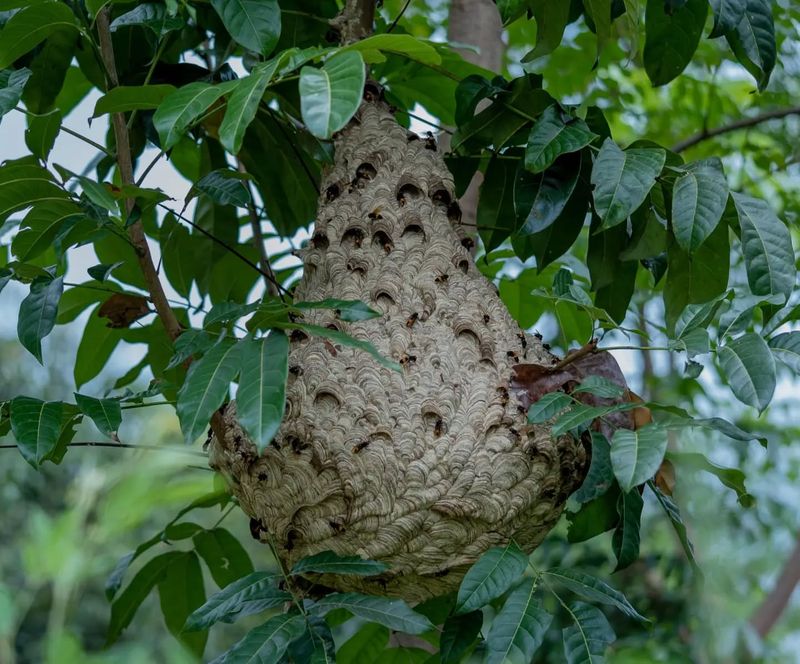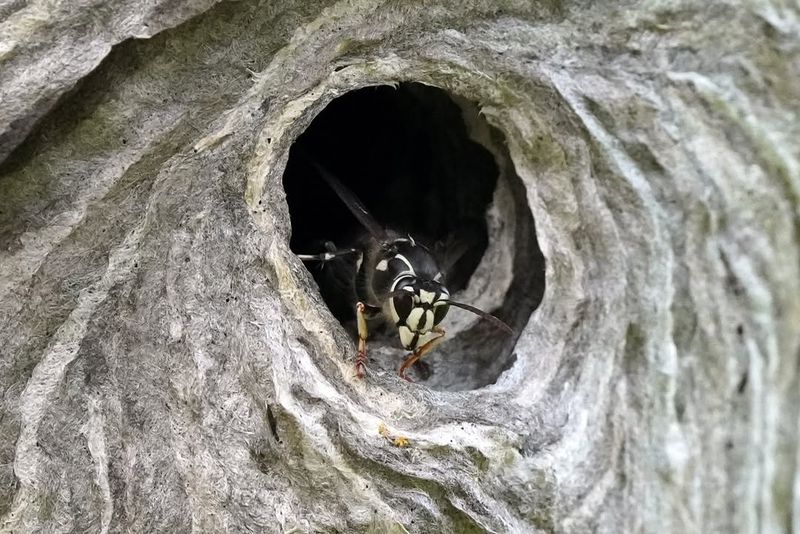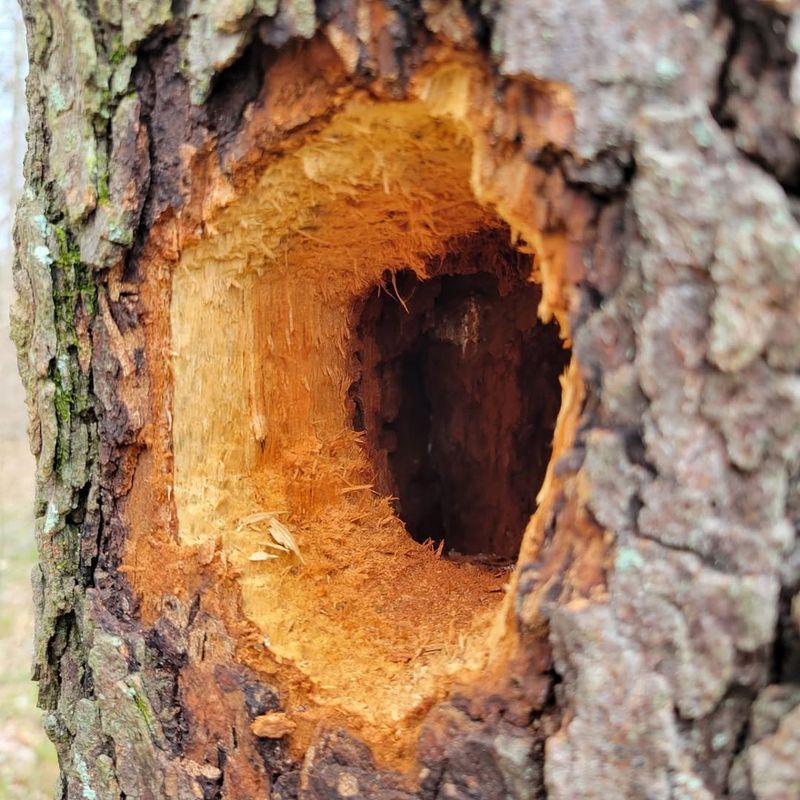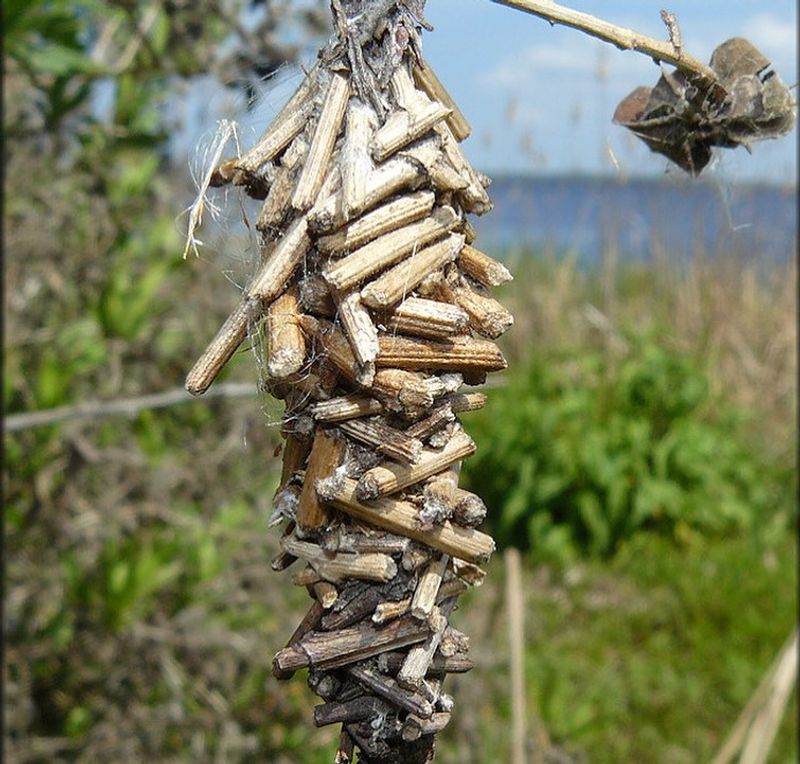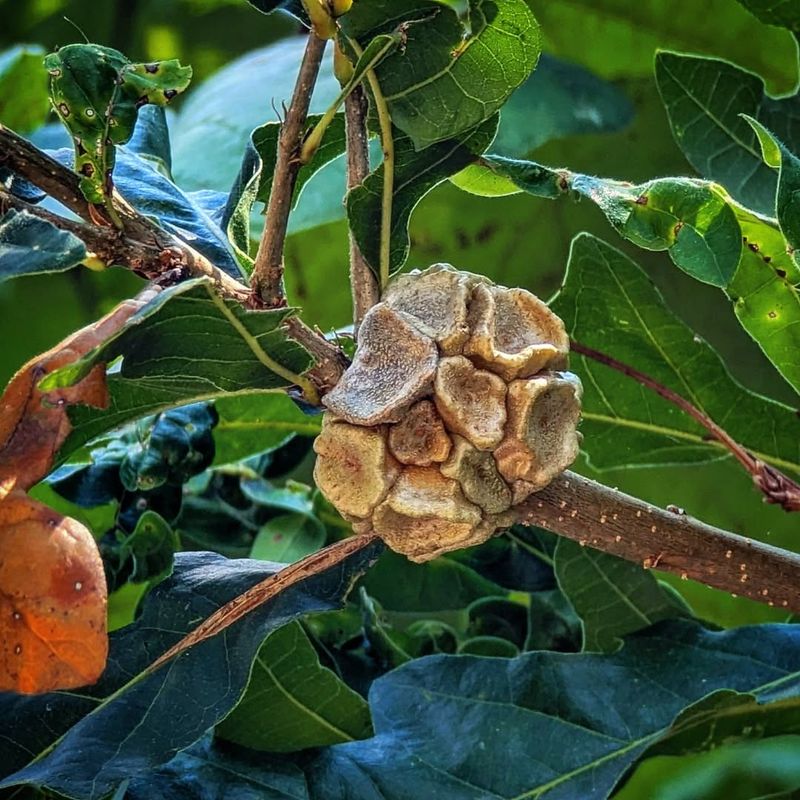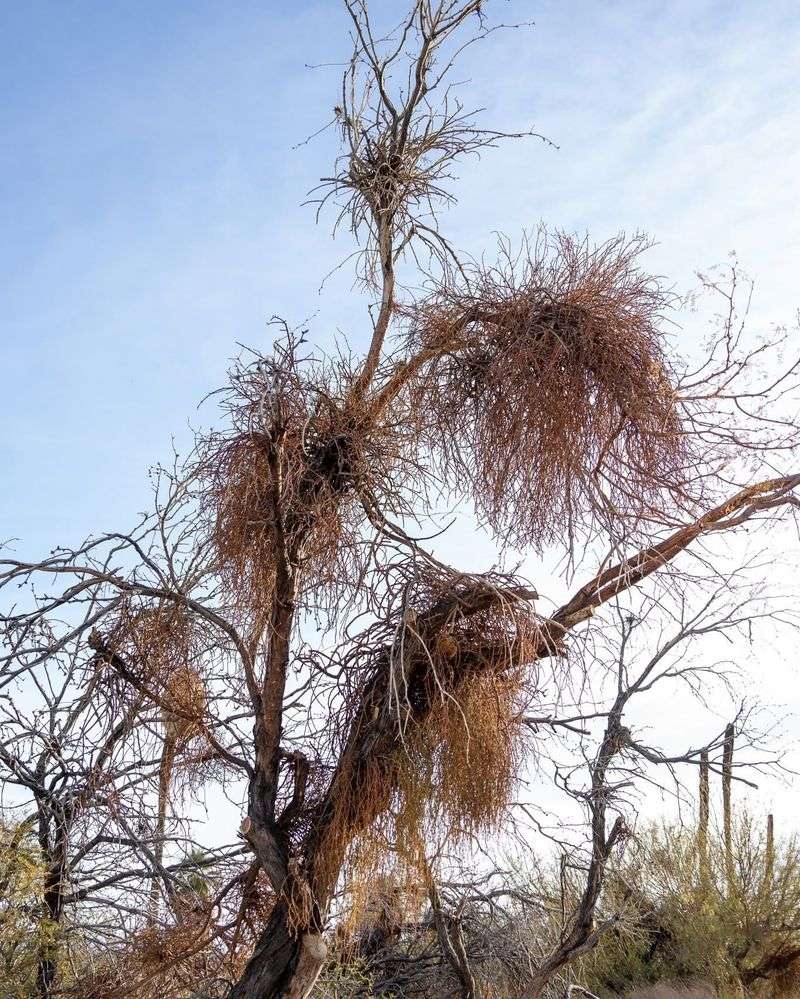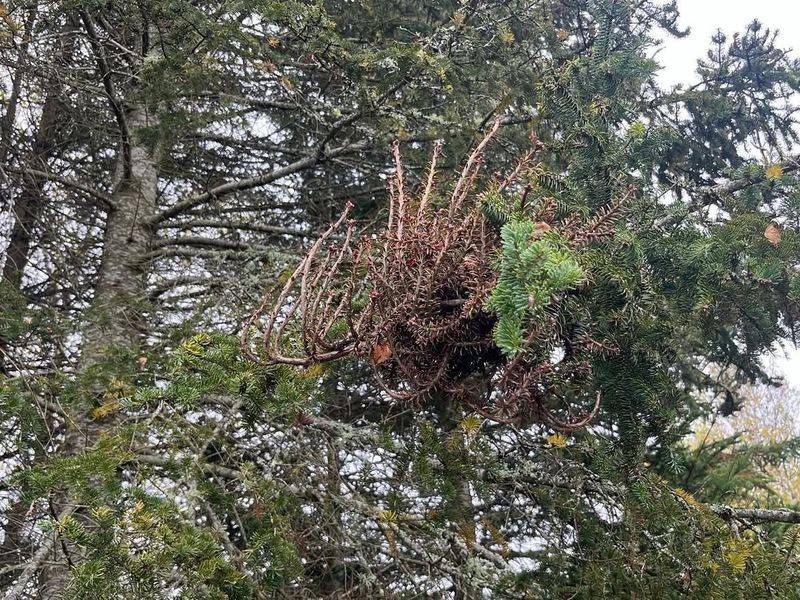What you’re spotting in that Colorado tree might not be the cozy little bird home you think it is. From odd clumps to papery pods, your branches could be hosting a whole cast of characters hiding in plain sight.
Before you chalk it up as just another nest, it’s worth taking a closer look, because what’s perched up there may tell a very different story than the one your eyes first believe.
1. Squirrel Dreys Hidden Among Branches
Squirrels craft dreys using twigs, leaves, and bark strips woven tightly together. These spherical homes sit wedged between branches, often looking messier than bird nests. You might notice multiple dreys in one area since squirrels build several throughout their territory.
During winter in Colorado, these structures become crucial shelters lined with soft materials like moss and fur. If you see a squirrel darting in and out, you’ve found their cozy hideaway. Dreys typically measure about a foot wide and feature a side entrance for quick escapes.
2. Paper Wasp Colonies Taking Shape
Paper wasps chew wood fibers mixed with saliva to create their umbrella-shaped nests. Unlike enclosed hornet nests, these structures reveal visible hexagonal cells arranged in neat rows. You’ll often find them dangling from tree limbs or tucked under branches.
Active from spring through fall, these colonies grow throughout the warm months. The gray or tan color comes from the wood sources wasps collect. While they can sting if threatened, paper wasps actually help gardens by eating caterpillars and other pest insects.
3. Bald-Faced Hornet Fortresses
Bald-faced hornets construct impressive gray fortresses that can reach basketball size by summer’s end. These aerial architects build layer upon layer of paper-like material, creating a protective shell around their colony. The nest entrance usually appears as a small hole near the bottom.
Watch from a safe distance—these insects defend their homes aggressively when disturbed. The intricate construction features multiple internal combs where larvae develop. Come winter, the colony vanishes, leaving behind an empty architectural marvel worth admiring from afar.
4. Abandoned Woodpecker Cavities
Woodpeckers excavate holes in tree trunks, creating cavities that might appear nest-like from certain angles. These perfectly round openings lead to hollow chambers where woodpeckers once raised their young. After the original builders move on, other creatures often claim these ready-made homes.
Owls, flying squirrels, and even bees frequently take over abandoned woodpecker holes all over Colorado. The entrance size varies depending on the woodpecker species that created it. Look for wood chips scattered below the opening as a telltale sign of recent excavation activity.
5. Bagworm Silk Shelters
Bagworms spin protective cases from silk threads decorated with bits of leaves, twigs, and needles. These peculiar structures dangle from branches like tiny hanging ornaments, usually measuring one to two inches long. Evergreen trees, especially junipers and spruces, commonly host these caterpillar architects.
Inside each case lives a single caterpillar that feeds on your tree’s foliage. Heavy infestations can seriously damage or destroy branches and even entire trees. Remove these cases by hand during winter months to prevent spring populations from exploding across your landscape.
6. Gall Formations From Tiny Insects
Certain wasps and mites inject chemicals into tree tissue, causing abnormal growths called galls. These round or irregular bumps can resemble small nests when clustered together on branches. Oak trees frequently develop woody ball galls, while willows might show pine cone-shaped versions.
Inside each gall, insect larvae develop safely, feeding on the plant tissue. Most galls don’t seriously harm healthy trees despite their strange appearance. Colors range from green to brown, and some species create remarkably intricate structures that almost look like tiny works of art.
7. Mistletoe Clumps Stealing Resources
Mistletoe grows as dense, bushy clumps that might fool you into thinking they’re nests from below. This parasitic plant sends roots into tree branches, stealing water and nutrients for survival. The evergreen foliage stays visible year-round in Colorado, creating rounded masses that stand out during winter.
Birds spread mistletoe seeds after eating the sticky berries, leading to new infections. While small amounts rarely damage trees, heavy infestations weaken branches and reduce overall tree health. Prune infected branches several inches below the mistletoe attachment point to control spread.
8. Witches’ Broom Abnormal Growth
Witches’ brooms appear as dense tangles of deformed twigs growing from a single point on a branch. Fungi, mites, or viruses trigger this bizarre growth pattern, causing shoots to multiply abnormally. The result looks like a messy bird nest made entirely of thin branches.
Common on conifers throughout Colorado, these formations rarely damage trees but create interesting focal points. Some gardeners actually prize certain witches’ brooms as they can be propagated into dwarf ornamental varieties. The structures often measure several feet across and persist for many years once established.

